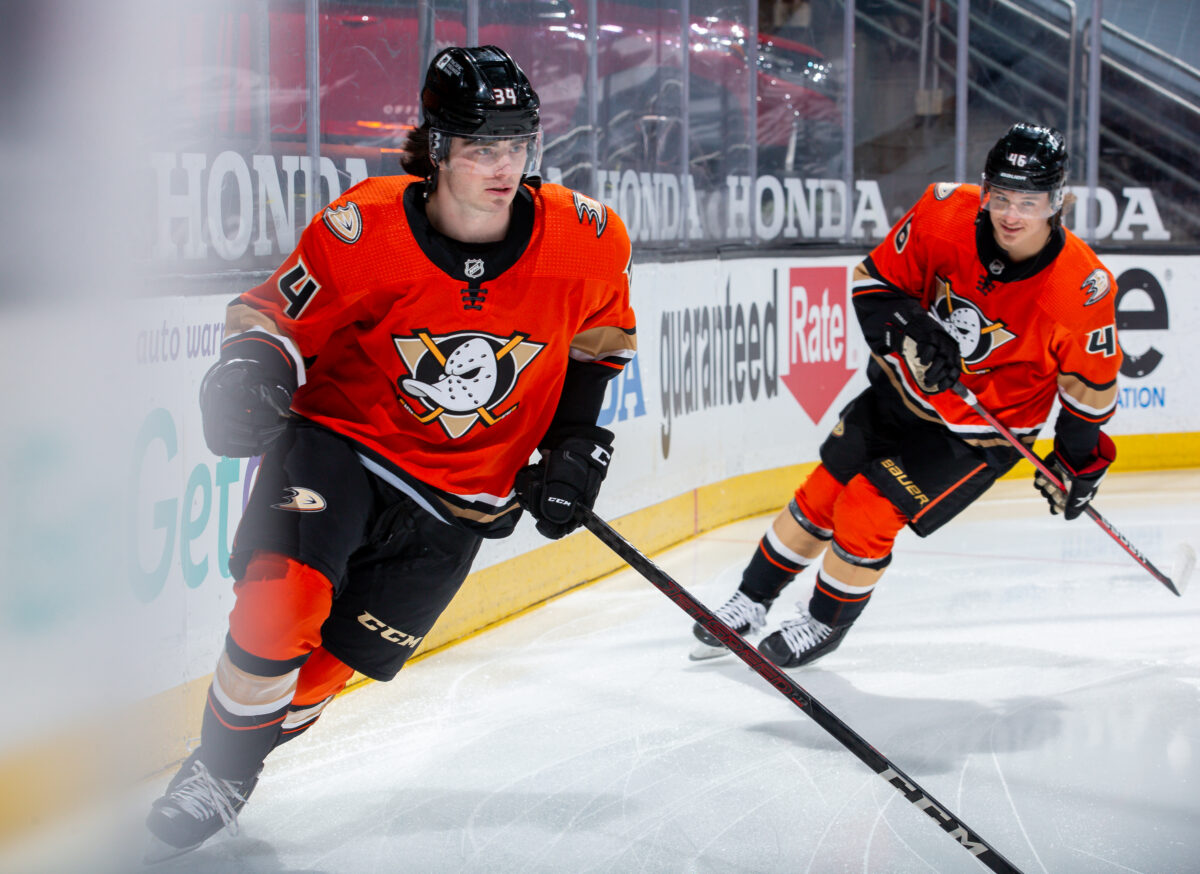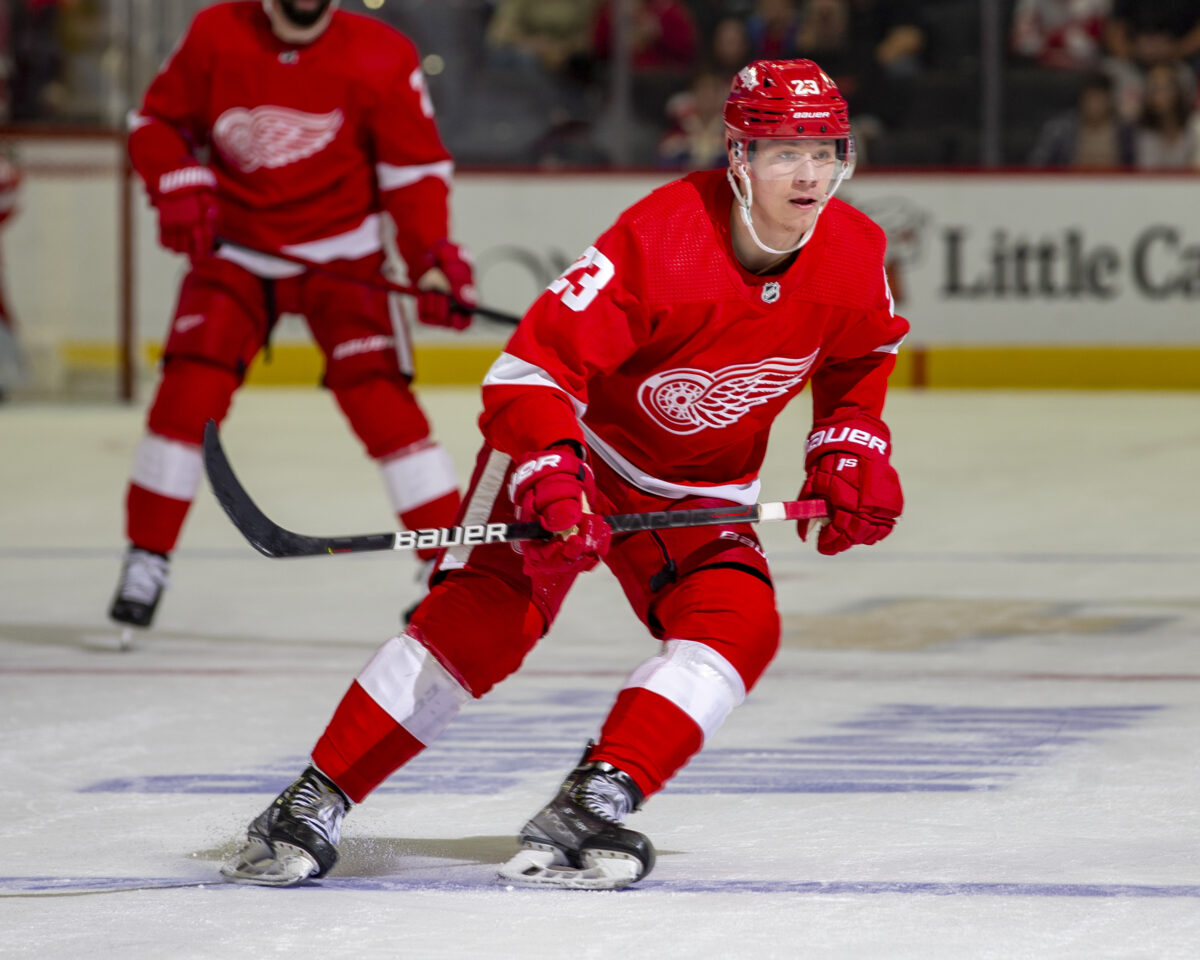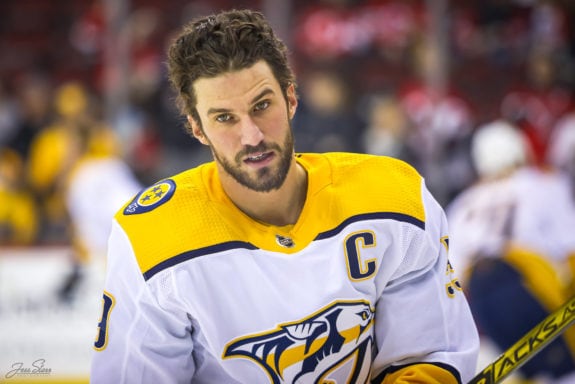The word “surprise” carries an ambiguous connotation. Certain surprises are pleasant and welcome. Think finding a crisp $20 bill in the pocket of a coat you haven’t worn in a while. Others are less desirable, like getting a flat tire on the side of the freeway. The point is surprises come in all shapes and sizes, and the 32 teams that do battle in the NHL are no different. Today, I’m looking at examples of the former, and of the three teams on this list, two can be counted among the NHL’s most downtrodden in recent seasons. Lengthy rebuilding efforts geared around the stockpiling and nourishing of promising young talent have begun to bear tangible fruit, and long-suffering fanbases can taste the sweet nectar of Stanley Cup competition. Almost.
This is the second of four entries in a short series of articles exploring the most disappointing and surprising NHL teams and players at the turn of the New Year. The first entry, which discusses the most disappointing teams, can be found here. Without further ado, here are three of the NHL’s most surprising teams as the calendar turns to 2022.
Anaheim Ducks (17-9-6, 13th in NHL)
It’s safe to assume that no one had the Anaheim Ducks comfortably occupying second place in the Pacific Division at the Christmas break, especially given they ranked 30th out of 31 teams in 2020-21. With a late-career revival from captain Ryan Getzlaf, a breakout campaign from Troy Terry, and notable contributions from fresh faces in Trevor Zegras, Sonny Milano, and Jamie Drysdale, the Ducks are brimming with confidence.

Getzlaf, the lone holdover from Anaheim’s first and only Stanley Cup triumph to date, is turning back the clock in scoring 21 points in 27 games. He’s also held his own during 5-on-5 play, with the Ducks collecting a majority of the shots (54.7 percent of all attempts) and quality chances (53.4 percent expected goals share) with the grizzled veteran on the ice. The tenured captain has rediscovered the fountain of youth without compromising his defensive responsibilities, setting a fine example for the burgeoning stars preparing to carry on his legacy in Orange County.
Next is Terry, the American-born winger who has enjoyed an explosive start to the 2021-22 campaign and is currently tied for fourth in the league in goals (18) with Kyle Connor and Chris Kreider. Although his blistering pace likely slows down (no, he isn’t going to continue scoring on 25 percent of his shots), Terry still ranks within the top 20 for cumulative individual expected goals (ixG), which suggests he’s consistently getting into opportune scoring areas. Additionally, Terry’s uncanny ability to slither around the ice forces opponents to impede his progress (fifth in penalties drawn), inadvertently setting up Anaheim’s highly efficient power play, which boasts a prolific 26.7 percent conversion rate.
Anaheim’s surprise start can easily be attributed to its more threatening offense, with their 3.16 goals per game (12th in the NHL), a significant increase on the league-worst 2.21 goals they scored each game last season. Apart from Terry’s reincarnation as a top NHL sniper, the inspired play of Zegras and Drysdale has given the lineup a much-needed facelift. Zegras ranks second in rookie scoring behind Lucas Raymond of the Detroit Red Wings, but he’s tallied the most primary assists (10) among all qualified freshmen. He’s frighteningly adept at slowing the game down to eviscerate the opposition, craftily executing such mesmerizing goals as the one below. What kind of Grinch couldn’t find pleasure in that?
The 19-year-old Drysdale has slid into Anaheim’s top-four, adding another dimension to a solid defense corps spearheaded by Hampus Lindholm and Cam Fowler. He’s kept his head above water at 5-on-5, maintaining a net-positive share of chance quality (51.2 xGF%) and high-danger chances (51.8 SCF%) as he gradually assumes greater play-driving responsibility at the NHL level.
A potent power play and a dependable net-minding tandem of John Gibson and Anthony Stolarz (eighth in collective SV%) have masked some uncertainty at 5-on-5 (the team accounts for just under half of all expected goals), but the next flock of Ducks is confidently nestling into instrumental roles within the organization. Can they use the early momentum to vault towards their first playoff berth since the 2017-18 season?
Detroit Red Wings (15-13-3, 20th in NHL)
Although the Detroit Red Wings have temporarily fallen back to Earth, their results through the first few weeks of the season suggested that the Yzer-plan is on track. Their two dynamic rookies in Lucas Raymond (28 points; 27th in league scoring) and Moritz Seider (12th in scoring among defenseman) integrated seamlessly into the lineup, wrestling prominent roles for themselves in rapid fashion. As of this moment, Raymond and Seider rank first and third in rookie scoring, respectively, and have quickly rushed to the forefront of the Calder Trophy discussion as a result.

Elsewhere, general manager Steve Yzerman’s most notable offseason acquisition of goaltender Alex Nedeljkovic was thought to be an uncertain gamble on a netminder with little NHL experience, but it’s a wager that’s paid off handsomely. While Nedeljkovic hasn’t approached the impenetrable .932 save percentage (SV%) he posted with the Carolina Hurricanes last season, he’s regularly provided the Red Wings with a steady presence (.916 SV%) in goal. Despite being fed a steady diet of quality scoring chances every night, Nedeljkovic ranks 14th in GSAx among goalies with at least 10 starts, providing top-half of the league value in the crease.
Consequently, their young squad can grow while playing close, high-stakes games rather than slogging through blowout after blowout, as is fairly common with rebuilding franchises. The good habits forged amidst the fire of competitive outings can define a player’s career, meaning their current track of development is crucial to guaranteeing future success.
Related: Early Success Driving the Red Wings Toward Unchartered Territory
Despite the boost to their public reputation, the Red Wings’ admirable record is a bit of a mirage. The impact of their ineffective special teams (both rank 27th in efficiency) and leaky defensive structure (29th in 5-on-5 scoring chance against per 60 minutes) has been mitigated by the skill of their rookie stars and Nedeljkovic’s stellar campaign, but they can only ride a faulty process so far. Even so, evading the shadowy depths of the league’s dungeon for the first time in years is a major victory for the franchise, earning the fearless heirs to the once hallowed Red Wings dynasty their fair share of praise. Look out NHL, the winged wheel approaches.
Nashville Predators (19-10-1, 9th in NHL)
Defensive stalwart Ryan Ellis leaving for the lush pastures of Philadelphia? Pressing concerns about the financial viability of handing large twin contracts to Matt Duchene and Ryan Johansen? Swirling trade rumours about the availability of veteran contributors such as Filip Forsberg, Mikael Granlund, and Mattias Ekholm? The Nashville Predators heard the murmurs and have resoundingly dismissed the general public’s pre-emptive reading of the team’s last rites in regards to their Stanley Cup window.
Duchene (25 points in 26 games) and Johansen (24 points in 27 games) are finally producing at a level commensurate with their sizeable cap hits. And the unexpected contributions of Granlund (27 points in 28 games) and rookie Tanner Jeannot (17 points in 30 games) have bolstered the team’s otherwise unremarkable forward group. Clearly their game plan has been successful in ensuring that the team controls the run of play, with the Predators ranking within the top 10 of both xGF% and SCF% at 5-on-5. Occasionally, a team that plays to its strengths rather than attempting to corral its troops into unfamiliar formations finds greater success. There isn’t much dynamic skill at the top of the roster, but they overcome their opposition by committee.

In goal, the sturdy play of the franchise’s long-time heir apparent to Pekka Rinne, Juuse Saros, is squarely in the Vezina Trophy conversation. His sparkling .924 SV% and 10th-ranked goals saved above expected (GSAx) have buoyed the stingy Predators (third in 5-on-5 expected goals against per-60-minutes) to new heights. Nashville’s middling level of quality scoring chance generation limits their competitive ceiling, so this group goes as far as Saros and their defensive structure allow.
Josi, their Swiss blue line maestro, continues to exhibit the fluid skating and incisive vision that has propelled him into Norris Trophy discussion for the better part of a decade. He’s tied for third in 5-on-5 primary assists by defensemen (6) and is first in individual scoring chances created among blueliners. Despite now being over 30 years of age, Josi has formed a formidable duo with his protege in Dante Fabbro, with Nashville accounting for 53.6 percent of expected goals when the pair patrols the ice.
Related: Predators’ Forsberg & Josi Chasing Down Franchise Records
After an uninspiring first two seasons behind the Predators’ bench, head coach John Hynes has uncovered his team’s identity. They’re comfortable in possession and are emboldened by Saros’ steadfast play as the last line of defense, and familiar punchlines are rediscovering what made them wanted commodities in the first place. Nearly a year after they appeared poised to assume the role of trade deadline carcass, Nashville looks set to upend the Western Conference playoff picture.
Can the Ducks, Red Wings, and Predators Keep the Good Times Rolling?
Each of the three teams I’ve keyed in on in this article has exceeded expectations in one form or another. The Ducks and Red Wings are transitioning away from their recent identities as punching bags for the NHL’s elite, and the Predators have restructured an organizational setup that had gone stale. More than half a season remains, though, and any one of these squads could implode spectacularly and render my arguments moot. Which, if any, of the aforementioned trio do you believe sustains their impressive early-season performance through to the conclusion of the season?
Data courtesy of Evolving Hockey, Hockey Reference, MoneyPuck, and Natural Stat Trick.